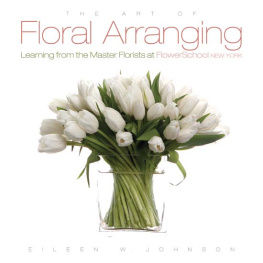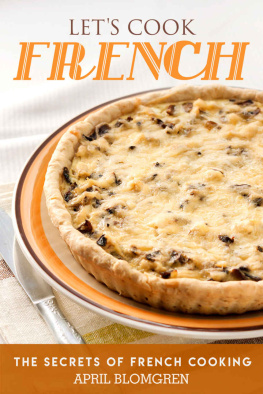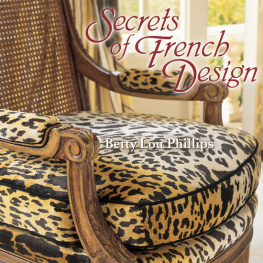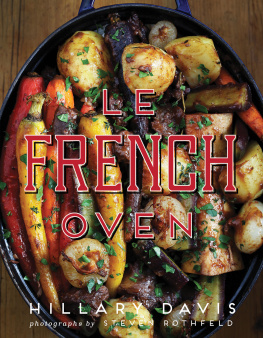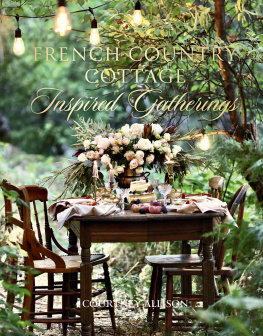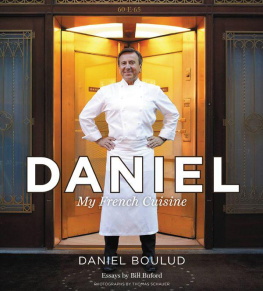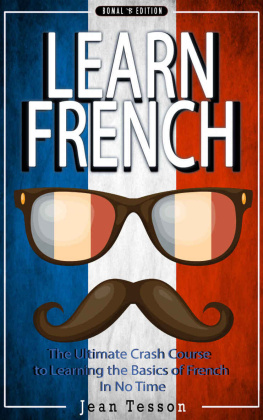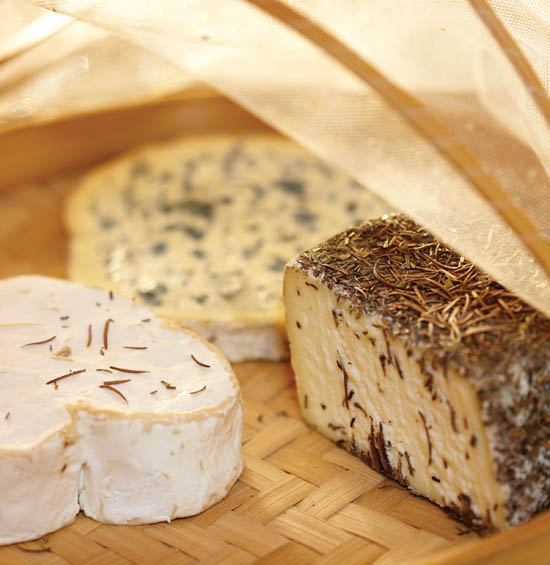Entertaining in the French Style
Eileen W. Johnson
Photographs by Brie Williams

Entertaining in the French Style
Digital Edition v1.0
Text 2010 Eileen W. Johnson
Photographs 2010 Brie Williams
All rights reserved. No part of this book may be reproduced by any means whatsoever without written permission from the publisher, except brief portions quoted for purpose of review.
Gibbs Smith, Publisher
PO Box 667
Layton, UT 84041
Orders: 1.800.835.4993
www.gibbs-smith.com
ISBN: 978-1-4236-1496-8
To Vanessa Brett, my daughter, who taught me the true meaning of love
Introduction
In a recent interview with the former poet laureate Charles Simic, the New York Times asked him how he felt about all the nonfiction books recently published on happiness. The writer posed the question, What advice would you give to people who are looking to be happy? His answer, For starters, learn to cook. I would add to that set a table and entertain friends.
Setting a beautiful table, whether it be informal, formal, countrylike, or citified is probably the most joyful part of entertaining. And nowhere in the world has the art of the table been more refined than in France. From the most humble restaurant that serves fish with a proper fish fork and knife to the most exalted meal at the Elysee Palace, the French attention to detail is shown in its glory while serving food.
It has been said that people in France tend not to invite outsiders into their homes, that much entertaining is done in restaurants. Perhaps this is true in Paris where many live in small apartments and it is easier to meet friends at the local caf or bistro. But I have found that entertaining at home is still very much a part of life in contemporary France.
One of the great pleasures of my life was putting together this book. Essentially Entertaining in the French Style is about sharing lovethe love of the land, the love of food being well prepared, the love of home and hearth. I was extremely lucky to be welcomed into so many homes that were abundant in warmth, creativity, and generosity of spirit.
France is a country of many different regions. This book is but a slice of the life that is France today.
Entertaining in the French Style is all about the food. It starts with the land, so rich and fertile, and shows how varied the produce we eat is, depending on where it is grown. It is about the farmers, the butchers, the cheesemakers, and the vast number of artisans who help to bring the food to the table. It is about the craftsmen who create dishes made from techniques that are the same as they were in the eighteenth century. It is about the chefs who prepare the food, the vintners who bottle the wine, but mostly about the many people who take the time and the effort to enjoy all the pleasures of the table with friends and family. Informally or formallyat lunch, at tea, at breakfast, and at dinnerthis book is all about entertaining inspired by all things French.
In the Medieval Town of Saignon: Breakfast in Bed
A mystical shroud surrounds the small village of Saignon, which is perched overlooking the Luberon Mountains. It has an otherworldly quality to its streets that one might easily define as spiritual. Since the Middle Ages, the twelfth-century church there, known as Saint Mary of Saignon, was a stopping point for religious pilgrims who were traveling to Rome. One can almost hear the footsteps of the devout in the town square with its fountain gently flowing, uninterrupted by the sound of passing automobiles. This town is relatively untouched by the large number of tourists following in the footsteps of Peter Mayles Provence. Tiny, with just over nine hundred inhabitants, the medieval village was recently named by Forbes.com as one of the three most idyllic places in Europe to live.

In the village of Saignon is a magical bed-and-breakfast called Chambre avec Vue, or Room with a View, owned by Kamila Regent and Pierre Jaccaud. Parts of their home date back to the sixteenth century, however most of the art in it is very much of the twentieth and twenty-first centuries. Each room in the multilevel house has a piece of art, much of it left by the artists who have resided there. In addition to taking guests, Pierre and Kamila support artists who stay in their home for periods of time and share in communal meals. Generally the artists leave a work of arteither a painting, an installation, a photograph, or a manuscript of poetry. The couple started taking in artists in 1995 as part of a state-funded association in France called Mel or Maison des Ecrivans et de la Litterature, The Institute of Writers and Literature, that promotes the arts.
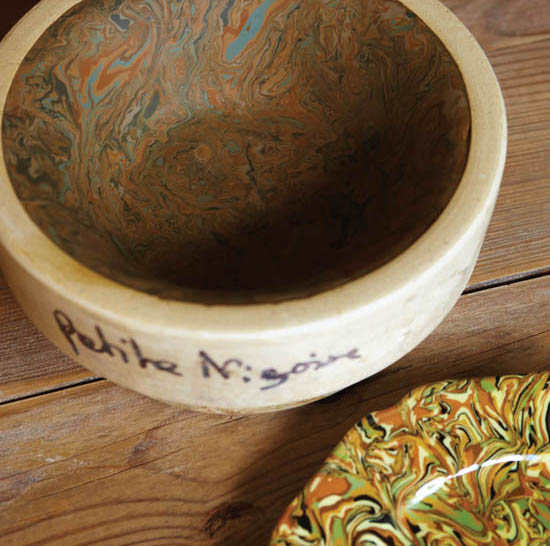
A bowl in the process of being painted and glazed at the Ateliers du Vieil Apt. Faience, or earthenware, has been a specialty in this region of France for centuries.
The bed-and-breakfast has a large wooden door with a hand-shaped knocker that opens into a hallway with voluminous sheets of hand-painted fabrics strategically draped side-by-side and dancing in the breeze created from the opened door. Inside is a room with a video installation that has a loop of cutout papers with figures in silhouette that move on a track to recorded music from The Magic Flute. In the darkened room surrounded by stone walls from the Middle Ages, it creates a strange and unique experience.
Each floor displays art in the hallways as well as books and antiques. Upstairs in the salon is a grand piano, once owned by Andre Gide, one of the greatest French writers of the twentieth century.
Rooms are scattered haphazardly in the different levels of the house; moving through them is like walking through a maze or tumbling through a rabbit hole of installation art.
A wooden bridge suspended over the alleyway behind the house leads to a spacious garden, which is also a showplace for art. There, lunch was served in the garden under an enormous pear tree on a table that can seat twenty convivial guests.
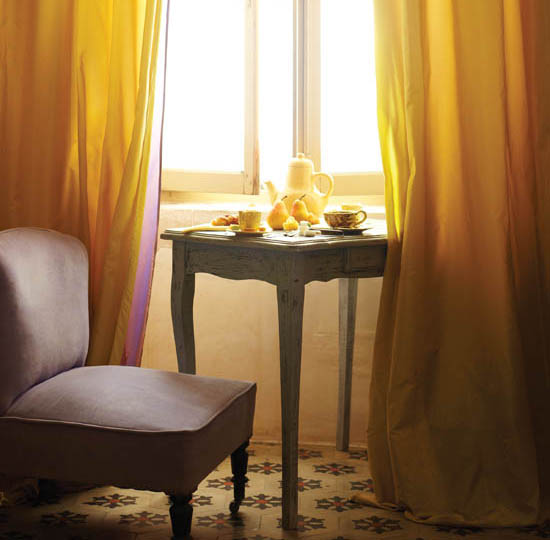
In the Salon, tea is served using the fine earthenware of Apt.
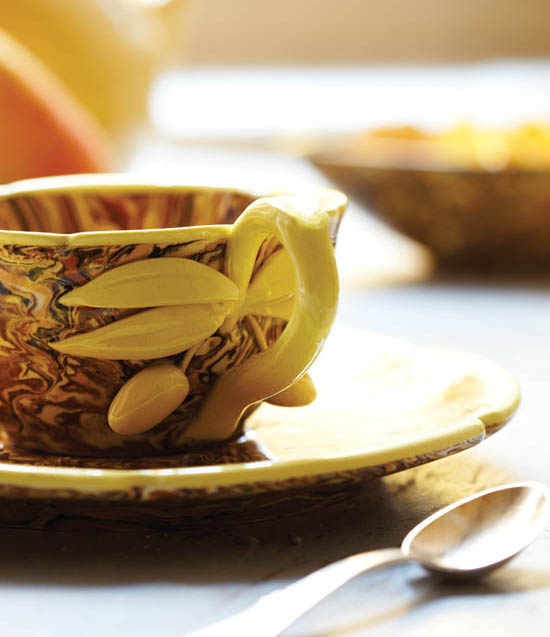
Flower detail on teacup.
The closest large town to Saignon is Apt, where faience or earthenware has been a specialty for several centuries. Fine faience from Apt appeared in the first half of the eighteenth century and it has been collected by many of the noble houses in France. Not far from Kamila and Pierres bed-and-breakfast is the workshop called Ateliers du Vieil Apt, which was started by Luc Jacquel and Benoit Gils in 2003 after they worked at the atelier of Jean Faucon, a sixth-generation potter. Ateliers du Vieil Apt includes a small showroom on the street and then a slightly larger workshop in back in which Benoit and Luc painstakingly create their astonishing pottery by hand. Each piece is put together according to eighteenth- century methods. The colors are natural dyes derived from the few remaining ochre mines in the region. Each flower adorning the dishes takes several hours to complete. The process is slow and detailed, from the molding to the firing to the glazing at the end. These are dishes that will be treasured for generations by the people who purchase them. It is amazing how much work goes into their products, as is the case with so many of the products of the small artisans in France.


